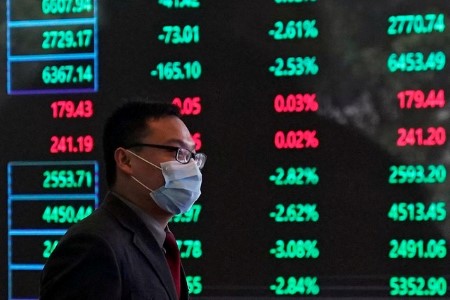




Philippines Trade Update: Trade trajectories trend along
 DOWNLOAD
DOWNLOAD

Policy Rate Updates: Double cut finale
 DOWNLOAD
DOWNLOAD

Monthly Economic Update: One for the road
 DOWNLOAD
DOWNLOAD


Fed dashes March cut hopes, market fallout begins

Jan 31 – While Asia’s beaten-down stock markets could use a clean slate in February they must first contend with Wall Street’s negative reaction to the Federal Reserve’s unsurprising decision to hold US rates steady on Wednesday.
Asia gets its chance to trade on the Fed Thursday and then pivot to Friday’s US payrolls report, which it will digest on Monday.
US stocks extended losses and Treasury yields fell after the Fed’s statement, which dropped language suggesting further hikes could be in the offing but, disappointingly, all but ruled out that a rate cut would come at the next meeting in March.
Policymakers were not confident enough that inflation was moving sustainably toward its 2% target to commit to an imminent time frame and Chair Jerome Powell later reinforced with reporters that a March cut was not the base case, which pushed stocks even lower.
“He’s preserving some of that flexibility and he’s still providing the direction that the Fed is going to be moving to easing stance,” said Keith Lerner, chief market strategist at Truist Wealth in Atlanta. “So markets were bouncing around a lot, but in general it’s in line with expectations and not a major shift. But him being more direct and forcefully pushing back against a March cut is a net negative.”
The S&P 500 was already retreating from record-high territory after Microsoft MSFT.O and Alphabet GOOGL.O flagged, in their earnings reports, rising costs to develop Artificial Intelligence. The market was also digesting a weaker-than-expected ADP National Employment report, which muddies the picture for Friday’s US payrolls report after surprisingly decent labor market data on Tuesday. The benchmark index closed down 1.6% on Wednesday but rose 1.6% for the month.
Japan continued to buck the selloff elsewhere in Asia. MSCI’s broadest index of Asia-Pacific shares outside Japan slid 0.4% and was heading for a monthly loss of roughly 5%, snapping a two-month winning streak.
With Wednesday’s close China’s stock markets have fallen six straight months despite recent efforts by Beijing to shore up the economy and confidence.
Chinese shares lost 0.9% after a survey showed manufacturing activity shrinking in January for a fourth month.
State-backed investors, the so-called “national team” appear to be plunging into blue-chip funds. More than USD 17 billion flowed to four Chinese-domiciled exchange traded funds tracking the CSI 300 index in the month to Jan. 26, S&P Global Market Intelligence found.
Japan’s Nikkei ended the month with a more than 8% gain, its best January performance since 1998 amid increasing confidence that its long-moribund economy has turned the corner.
Minutes from the last Bank of Japan meeting, released Wednesday, bore out the market view that the central bank will soon take a hawkish turn from keeping rates negative and lifted JGB yields and underpinned the yen.
The dollar slipped against the yuan and fell against the yen in US trade.
Here are key developments that could provide more direction to markets on Thursday:
— Japan PMI for December
— US weekly jobless claims
— US PMIs for January
(Reporting by Alden Bentley)
This article originally appeared on reuters.com





 By Reuters
By Reuters